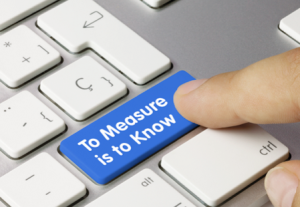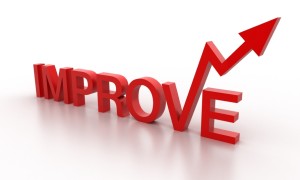Over the past couple of years I have spoken to many companies about their candidate experience efforts. When I ask them to describe their strategy usually they either talk in generalities saying it is ‘a priority’ or they describe specific tactics they have implemented. However, very rarely do I hear a cohesive, integrated organizational strategy which includes cross-functional engagement.
In many cases, a company has an identifiable problem or a galvanizing event (e.g. a top-talent rejection) which triggers a renewed focus on investing their candidate experience. For Scott Weaver at Cumming Corporation, a 2015 Candidate Experience award winner, the metric that stood out was ‘time-to-fill’ and his team was looking to move faster. As a professional services firm, every day a req goes unfilled is lost revenue for their organization. Their candidate experience journey started with a process improvement and optimization project. For many other organizations, it starts with solving a specific activity during the recruiting process. However, many companies, like Cummins, are realizing that they need to take a more holistic perspective on the end-to-end candidate experience.

I recently had the opportunity to talk to Gerry Crispin about where a company should start if they wanted to systemically build a stronger Candidate Experience-focused organization. He described a 3-step framework on how to build a sustainable candidate experience competency.
Step 1: What’s important?
Company OKRs
If the candidate experience is not listed on the priority list for either the organization, HR or the Recruiting Function, then the Candidate Experience really isn’t ‘important’. It is just one of the many things an organization does that they try not to screw up. What do I mean by that? It means that everyone generally knows that the Candidate Experience is one of the aspects of recruiting and everyone tries to do well. It is no different than Product Quality or Customer Service. But if you do not have it clearly listed as a goal or objective at some level in the organization, then it is just another strategy based on hope. And hope is not a strategy. And it certainly isn’t part of the corporate culture.

The first step to developing sustainable organizational Candidate Experience capability is to make it a priority by including it in your company or department’s objectives. Without organizational alignment, buy-in and engagement, it is just a bunch of individuals who are ‘doing the right thing’ but not necessarily with the support of their leadership.
Candidate Fairness
According to Gerry Crispin, one of the biggest drivers of delivering a good candidate experience is the perception of fairness by candidates. “If candidates think the fix is in then their perception is reality.” Examples include not hearing from anyone after applying or being told they would hear back in two weeks, the no one follows up or answers their call. In addition, Crispin sees the following drivers what drives the best candidate experience-driven organizations:
- Setting proper expectations (for both the job and the hiring process)
- Listening
- Accountability
- Perception of fairness
- Closure
At Cummings Corporation, increasing transparency to candidates to the process has been a big focus that helps with perceived fairness. Improved communication with both the hiring team and the candidate has allowed them to go faster. For Scott Weaver’s recruiting team, this starts when an application is received and candidates immediately receive an email describing the process in detail. The email includes specific expectations about what happens next and how to get answers if there are concerns or unexplained delays. Their philosophy is about treating the candidate with respect, but without over-investing precious recruiting team resources.
Step 2: How are we doing?
Once you have everyone bought in that the candidate experience is a priority, you need to know where you stand. Gerry Crispin says collecting data is a critical starting point. “First and foremost you need some form of baseline. There is no point in starting to work on your candidate experience capability if you don’t have some sense of where the context is going to be.” Determining a baseline measurement on where you are starting from will help you track your progress. Ideally, everyone you tough from the beginning of the sourcing process to onboarding are part of your measurement. And there are many milestones during which you can measure the candidate experience (as described in detail in the Talent Board’s CandE report ), but to start, Gerry Crispin recommends just measuring the Net Promoter Score of the finalists and the candidate you hired. Over time you can expand your measurement to candidates earlier in the process to include the application and screening process.

Ultimately, the most important recruiting metrics is quality of hire since it is the process outcome for the talent acquisition function. But to measure the quality of the entire process, candidate experience metrics are the best indicator of how the various stakeholders are committed to bringing on the best talent.
Step 3: Priorities to Improve
The insights you gather from baselining your candidate experience metrics will point you to where the issues are. Once you see all the different areas that need work, you will need to pick your spots and prioritize which to work on first. How you choose to address these priorities will depend on what you think the best plan of action will be; whether it is people, process or tools.

At Cumming, they looked at the 16 touch-points they have with candidates, mapping their journey and benchmarked themselves after the hospitality industry for how to deliver a concierge-like experience.
Given the number and complexity of milestones, from sourcing to onboarding, just picking one or two areas to improve can be resource and time intensive depending on the size of your organization. Both from a financial and change management perspective. Throw in any change in technology and you quickly realize that systemic change will not happen overnight. However, small, incremental tweaks can make a real difference, like removing unnecessary fields in your application process or tailoring your rejection emails to give candidate better insight into why they were not selected to move forward.
From several of the Candidate Experience Award winners I have spoken with, improving their candidate experience capability is an ongoing investment, but at any time they are clearly prioritizing where they point their limited resources to have the biggest impact on their overall outcome: hiring success for both hires and their company.
About the Author: Ray Tenenbaum is the founder of Great Hires, a recruiting technology startup offering a mobile-first Candidate Selection platform for both candidates and hiring team success. Ray has previously spent half of his career building Silicon Valley startups such as Red Answers and Adify (later sold to Cox Media); the other half of his career was spent in marketing and leadership roles at enterprise organizations including Procter & Gamble, Kraft, Booz & Co. and Intuit. Ray holds an MBA from the University of Michigan as well as a bachelor’s in chemical engineering from McGill University.
Follow Ray on Twitter @rayten or connect with him on LinkedIn.